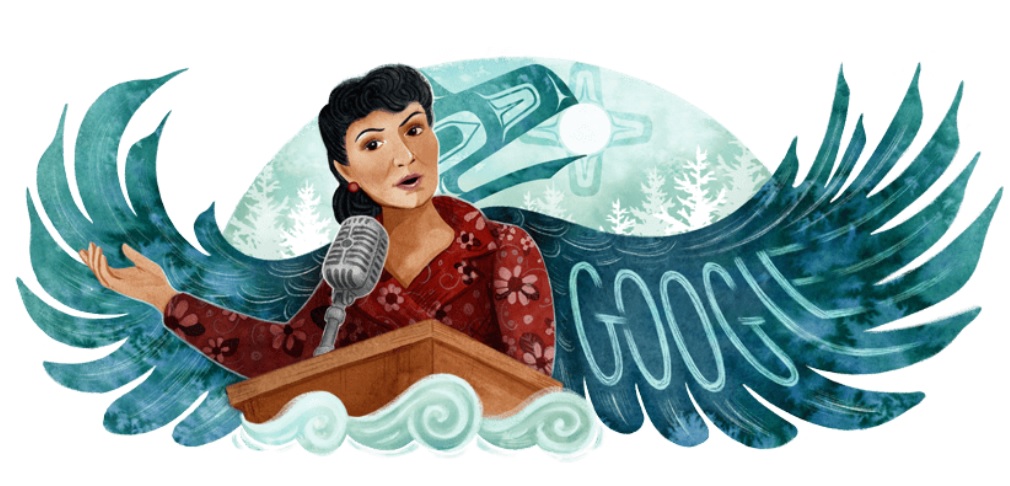Elizabeth Peratrovich: Google dedicates doodle to American civil rights activist

- Country:
- United States
Google today dedicates a beautiful doodle to Elizabeth Peratrovich, an American civil rights activist and member of the Tlingit nation who worked on behalf of equality for Alaska Natives.
Elizabeth Peratrovich was born on July 4, 1911 in Petersburg, Alaska and was a member of the Lukaax̱.ádi clan, in the Raven moiety of the Tlingit nation. She played an instrumental role in the 1945 passage of the first anti-discrimination law in the United States.
Elizabeth Peratrovich became an orphan at her young age. Andrew and Mary Wanamaker adopted her. She graduated from Ketchikan High School, and then attended Sheldon Jackson College in Sitka, and the Western College of Education in Bellingham, Washington (now part of Western Washington University).
Elizabeth Peratrovich was married to Roy Peratrovich, who was also Tlingit, as well as of Serbian ancestry. With a passion for teaching, Peratrovich attended college in Bellingham, Washington. There she became reacquainted with Roy Peratrovich who was a student at the same school. They got married and moved to Klawock, Alaska where their role in local politics and Elizabeth Peratrovich’s knack for leadership drove her heavy involvement with the Alaska Native Sisterhood, one of the oldest civil rights groups in the world, leading to her eventual appointment as the organization’s Grand President.
Elizabeth Peratrovich and her husband tried to purchase a home in their new city, but they were denied when the sellers saw they were of Alaska Native descent. Instances like these were unfortunately common for Alaska’s Indigenous peoples and further motivated Elizabeth Peratrovich to take action in the name of systemic change. They petitioned the territorial governor, Ernest Gruening, to prohibit public places from posting the "No dogs or Natives allowed" signs that were common in Alaska during this time.
The Anti-Discrimination Act was proposed by the Alaska Native Brotherhood and the Alaska Native Sisterhood, but the first attempt to pass this legislation failed in 1943. However, in 1945, Roy and Elizabeth Peratrovich became the Presidents of the Alaska Native Brotherhood and the Alaska Native Sisterhood, respectively, and lobbied the territory's legislators and Alaskan Governor Earnest Gruening to pass the act.
Elizabeth Peratrovich died at the age of 47 on December 1, 1958. She was badly suffering from breast cancer. She is buried at Evergreen Cemetery, Juneau, Alaska alongside her husband Roy. Her son, Roy Peratrovich, Jr., became a noted civil engineer in Alaska. He designed the Brotherhood Bridge in Juneau, which carries the Glacier Highway over the Mendenhall River.
Also Read: Aliye Berger: Google honors Turkish artist on her 117th birthday
- READ MORE ON:
- Elizabeth Peratrovich
- Google doodle









